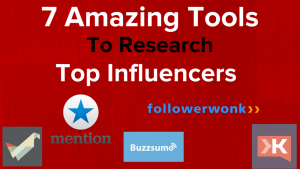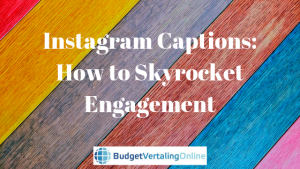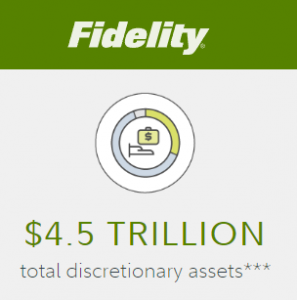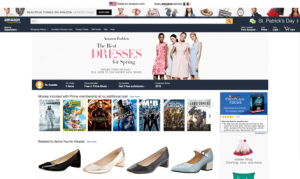From simple message segmentation to programmatic ad buying and individual-level website customization, the combination of big data and technology is transforming the possibilities of personalization.
But the rise of personalization tools and popularity has also meant the rise of marketers doing personalization the wrong way. I’ve lost track of the number of times we’ve seen:
- Ad hoc implementation of off-the-shelf features without understanding what need they’re solving.
- Poor personalization insights with little data analysis and framework thinking driving the implementation.
- Lack of rigorous process to hypothesize, test, and validate the personalization ideas.
- Lack of resources to sustain the many additional marketing messages that must be created to support many personalized target segments.
That’s why, in collaboration with our partners at Optimizely, we have created a roadmap for creating the most effective personalization strategy:
- Step 1: Defining personalization
- Step 2: Is a personalization strategy right for you?
- Step 3: Personalization ideation
- Step 4: Personalization prioritization
Step 1: Defining personalization
Personalization and segmentation are often used interchangeably, and are arguably similar. Both use information gathered about the marketing prospect to customize their experience.
While segmentation attempts to bucket prospects into similar aggregate groups, personalization represents the ultimate goal of customizing the person’s experience to their individual needs and desires based on in-depth information and insights about them.
You can think of them as points along a spectrum of customized messaging. You’ve got the old mass marketing approach on one end, and the hyper-personalized, 1:1, marketer-to-customer nirvana on the other end. Segmentation lies somewhere in the middle. We’ve been doing it for decades, but now we have the technology to go deeper, to be more granular.

Source: Widerfunnel
Every marketer wants to provide the perfect message for each customer — that’s the ultimate goal of personalization.
Step 2: Is a personalization strategy right for me?
Here are 3 questions that will help you determine your personalization maturity and eligibility.
Do I have enough data about my customers?
For companies getting started with personalization, we recommend that you at least have fundamental audience segments in place. These might be larger cohorts at first, focused on visitor location, visitor device use, single visitor behaviors, or visitors coming from an ad campaign.
If you haven’t categorized your most important visitor segments, you should focus your energies on segmentation first, before moving into personalization.
Do I have the resources to do personalization effectively?
- Do you have a team in place that can manage a personalization strategy?
- Do you have a personalization tool that supports your strategy?
- Do you have an A/B testing team that can validate your personalization approach?
- Do you have resources to maintain updates to the segments that will multiply as you increase your message granularity?
Personalization requires dedicated resources and effort to sustain all of your segments and personalized variations. To create a truly effective personalization strategy, you will need to proceduralize personalization as its own workstream and implement an ongoing process.
Do I have a process for validating my personalization ideas?
Personalization is a hypothesis until it is tested. Your assumptions about your best audience segments, and the best messaging for those segments, are assumptions until they have been validated.
“Personalization requires the same inputs and workflow as testing; sound technical implementation, research-driven ideation, a clear methodology for translating concepts into test hypotheses, and tight technical execution. In this sense, personalization is really just an extension of A/B testing and normal optimization activities. What’s more, successful personalization campaigns are the result of testing and iteration.” – Hudson Arnold, Strategy Consultant, Optimizely
Great personalization strategy is about having a rigorous process that allows for 1) gathering insights about your customers, and then 2) validating those insights. You need a structured process to understand which insights are valid for your target audience and create growth for your business.

Source: Widerfunnel
There are two critical phases to an effective personalization strategy: Explore and Validate. Explore uses an expansive mindset to consider all of your data, and all of your potential personalization ideas. Validate is a structured process of A/B testing that uses a reductive mindset to refine and select only those ideas that produce value.
Without a process in place to prove your personalization hypotheses, you will end up wasting time and resources sending the wrong messages to the wrong audience segments.
Personalization without validation is simply guesswork.
Step 3: Personalization ideation
If you’ve answered “Yes” to those three questions, you’re ready to carry out personalization; you are confident in your audience segments, you have dedicated resources, perhaps you’re already doing basic personalization. Now, it’s time to build your personalization strategy by gathering insights from your data.
One of the questions we hear most often when it comes to personalization is, “How do I get ideas for customized messaging that will work?” This is the biggest area of ongoing work and your biggest opportunity for business improvement from personalization.
The quality of your insights about your customers directly impacts the quality of your personalization results.
Here are the three types of personalization insights to explore:
- Deductive research
- Inductive research
- Customer self-selected
1) Deductive research and personalization insights
Are there general theories that apply to your particular business situation?
Psychological principles? UX principles? General patterns in your data? ‘Best’ practices?
Deductive personalization starts with your assumptions about how your customers will respond to certain messaging based on existing theories...but it doesn’t end there. With deductive research, you should always feed your ideas into experiments that either validate or disprove your personalization approach.
2) Inductive research and personalization insights
Are there segments within your data and test results that you can analyze to gather personalization insights?
If you are already optimizing your site, you may have seen segments naturally emerge through A/B testing. A focused intention to find these insights is called inductive research.
Inductive personalization is driven by insights from your existing A/B test data. As you test, you discover insights that point you toward generalizable personalization hypotheses.
Here’s an example from one of WiderFunnel’s e-commerce clients that manufactures and sells weather technology products. This company’s original product page was very cluttered, and we decided to test it against a variation that emphasized visual clarity.

Source: Widerfunnel
Surprisingly, the clear variation lost to the original, decreasing order completions by -6.8%. WiderFunnel Strategists were initially perplexed by the result, but they didn’t rest until they’d uncovered a potential insight in the data.
Research published by the NN Group describes teen-targeted websites, suggesting that younger users enjoy searching and are impatient, while older users enjoy searching but are also much more patient when browsing.
With this research in mind, the Strategists dug in further and found that the clear variation actually won for older users to this client’s site, increasing transactions by +24%. But it lost among younger users, decreasing transactions by -38%.
So, what’s the takeaway? For this client, there are potentially new ways of customizing the shopping experience for different age segments, such as:
- Reducing distractions and adding clarity for older visitors
- Providing multiple products in multiple tabs for younger visitors
This client can use these insights to inform their age-group segmentation efforts across their site.
3) Customer self-selected personalization
Ask your prospects to tell you about themselves. Then, test the best marketing approach for each segment.
Customer self-selected personalization is potentially the easiest strategy to conceptualize and implement. With self-selected personalization, you’re asking your users to self-identify, segmenting themselves, which triggers specific messaging based on how they self-identified. And then you can test the best approach for each of those segments.
Here’s an example to help you visualize what I mean. One of our clients is a Fortune 500 healthcare company — they use self-selected personalization to drive more relevant content and offers, in order to grow their community of subscribers.
First, this client created segments, focused on this particular health situation, that people could click on: “Click on this button to get more information,” “I have early stage disease,” “I have late stage disease,” “I manage the disease while I’m working,” “I’m a physician treating the disease,” and, “I work at a hospital treating the disease.”
These segments came from personas that this client had developed about their subscriber base.
Once a user self-identified, the offers and messaging that were featured on the page were adjusted accordingly. But, we wouldn’t want to assume the personalized messages were the best for each segment.
In self-selected personalization, there are two major areas test. You want to find out:
- What are the best segments?
- What is the best messaging for each segment?
Developing an audience strategy
Developing a personalization strategy requires an audience-centric approach. The companies that are succeeding at personalization are not picking segments ad hoc from Google Analytics or any given study, but are looking to their business fundamentals.
Once you believe you’ve identified the most important segments for your business, then you can begin to layer on more tactical segments. These might be qualified ‘personas’ that inform your content strategy, UX design, or analytical segments.
Step 4: Personalization prioritization
If this whole thing is starting to feel a little complex, don’t worry. It is complex, but that’s why we prioritize. Even with a high-functioning team and an advanced tool, it is impossible to personalize for all of your audience segments simultaneously. So, where do you start?
Optimizely uses a simple axis to conceptualize how to prioritize personalization hypotheses. You can use it to determine the quantity and the quality of the audiences you’d like to target.

The x-axis refers to the size of your audience segment, while the y-axis refers to an obvious need to personalize to a group vs. the need for creative personalization.
For instance, the gray bubble in the upper left hand quadrant of the chart refers to a company’s past purchasers. Many clients want to start personalizing here, saying, “We want to talk to people who have spent $ 500 on leather jackets in the last three months. We know exactly what we wanna show to them.”
But, while you may have a solid merchandising strategy or offer for that specific group, it’s a really, really, really small audience. That’s not to say you shouldn’t target because there is an obvious need, but it needs to be weighed against how large that group is. Because you should be treating personalization like an experiment, you need to be sensitive to statistical significance.
The net impact of any personalization effort you use will only be as significant as the size of the segment, right? If you improve the conversion rate 1000% for 10 people, that is going to have a relatively small impact to your business.

But, if you move right on the x-axis, you’ll be working with a larger segment, even if the personalized messaging is less obvious (and might require more experimentation). Most companies we speak to don’t have a coherent geographical personalization strategy, but it’s a large way of grouping people and, therefore, may be worth exploring!
You may be more familiar with WiderFunnel’s PIE framework, which we use to prioritize our ideas. How does this axis relate? Optimizely’s axis is a simplified way to think about personalization ideas to help you ideate quickly. It’s two inputs, Obvious Need and Audience Size are essentially two inputs we would use to calculate a thorough PIE ranking of ideas.
The Obvious Need axis would influence the Potential ranking and the Audience Size would influence Importance. Thinking about the third PIE factor, Ease, may help if some segmentation data is more difficult to track or otherwise acquire, or if the maintenance cost of ongoing messaging is high.
Conclusion
To create the most effective personalization strategy for your business, you must remember what you already know. For some reason, when companies start personalization, the lessons they have learned about testing all of their assumptions are sometimes forgotten.
You probably have some great personalization ideas, but it is going to take iteration and experimentation to get them right.
A final note on personalization: Always think of it in the context of the bigger picture of marketing optimization.
Insights gained from A/B testing inform future audience segments and personalized messaging, while insights derived from personalization experimentation informs future A/B testing hypotheses. And on and on.
Don’t assume that insights gained during personalization testing are only valid for those segments. These wins may be overall wins.
The best practice when it comes to personalization is to take the insights you validate within your tests and use them to inform your hypotheses in your general optimization strategy.
Business & Finance Articles on Business 2 Community(124)
Report Post









